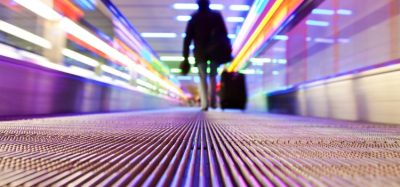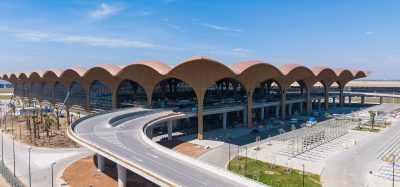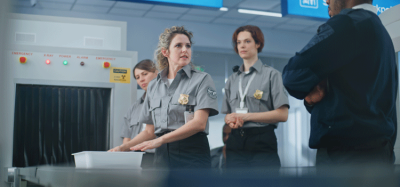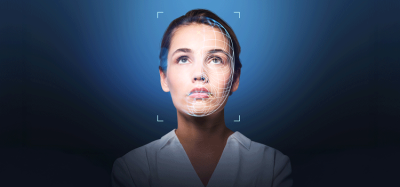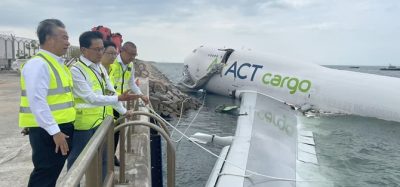Transforming the UK Border
Posted: 5 April 2010 | Brodie Clark, Head of the UK Border Force | No comments yet
The UK has one of the toughest borders in the world and we are determined to ensure it stays that way.
The UK has one of the toughest borders in the world and we are determined to ensure it stays that way.
Using technology, the UK Border Agency is transforming the way in which the UK border is protected, tackling smuggling, illegal immigration and associated organised crime, as well as helping identify other threats to the UK whilst facilitating legitimate travel and trade.
In transforming our border, we’re integrating the work of the legacy immigration and customs services into a new joined-up method of managing the border. We are taking advantage of improvements in technology both to increase the level of data and intelligence support to frontline operations and to effectively manage the passage of increasing passenger numbers through automated systems, whilst maintaining strong border controls.
Join us live: Shaping the Next Generation of Hold Baggage and Air Cargo Screening
Join us live for an insightful webinar on 11th December at 14:00 GMT, in collaboration with Smiths Detection, as we explore the strategic balance of operational efficiency, regulatory compliance, and sustainability in high-volume security environments.
This session offers a focused look into future-proofing your security strategy.
Key learning points
- Cost Reduction: Strategies to minimize bag travel time while simultaneously reducing operational costs.
- Regulatory Roadmap: Insights into the next wave of regulatory changes and their impact on future investment decisions.
- Sustainable Systems: Practical approaches to building sustainability into security systems and lowering the total cost of ownership (TCO).
- Scalable Solutions: Real-world examples of scalable systems supporting current airport growth and preparing for tomorrow.
Register now for expert insights, case studies, and actionable strategies on operational efficiency!
Bringing together the combined abilities and skills from immigration and customs makes a lot of sense as we modernise our border controls to meet new challenges and increased demands. We are increasingly a border guard as opposed to a regulatory service.
We have combined legacy customs and immigration to create the strongest force at the border. Working together means the border force can identify trends, patterns and anomalies in these patterns – which will in turn provide for increased success at the border controls.
e-Borders
To protect the public we are targeting terrorist suspects, known criminals and would-be illegal immigrants before they can do harm, by checking cross border travel using the electronic border control system called e-Borders.
e-Borders will revolutionise the way in which we operate the primary border checkpoint. All passengers arriving in and departing from the UK will be pre-checked before departure and alerts will be available earlier to allow Border Force and Police officers the opportunity to identify known and suspected criminals.
The e-Borders system is now checking over 100 million passenger movements per year in and out of the UK against UK Border Agency and police watch lists. Since 2005, this has led to over 5,000 arrests for crimes including murder, rape and assault. It has helped target individuals connected to counter terrorist investigations, led to fake British passports being impounded, the confiscation of drugs and tobacco, and immigration offenders being refused entry.
e-Borders will enable the UK Government to count people in and out of the country and it will capture 100 per cent of all passenger and crew movements by March 2014.
e-Borders also enables us to profile known trends, traits and interlinked passenger movements in order to target particular travel patterns which indicate higher risks of immigration and smuggling crimes.
These new checks make up just one part of Britain’s triple ring of security, alongside fingerprint visas for three-quarters of the world’s population and the roll-out of ID cards for foreign nationals locking them to one identity. We are also using various technologies at the border to detect illegal immigrants and illicit materials.
We will use more intelligence, through profiling and target matching, so that Border Force officers can prioritise against higher risk targets, and continue to develop our relationships with Police and other law enforcement partners to improve and increase the inter-relationship between Police and Border Force.
National Border Targeting Centre
The National Border Targeting Centre and regional hubs will provide the bulk of intelligence and profile briefings for Border Force operations. The new centre in Manchester is purpose-built for integrating with our partner agencies to drive frontline activity/operations, to deliver the best results from available data and to focus on the highest risk targets.
We will build on the opportunities available to us through the NBTC – working with agency partners in the UK and beyond, to ensure all those who threaten harm to the UK are identified early and targeted.
The introduction of new technology, and the vastly increased use of e-Borders data and intelligence, will transform the amount of information frontline officers will have available to them when checking documents and assessing the legitimacy of people and goods – with the primary purpose of identifying people of interest more quickly.
Automated clearance
Developments in biometric recognition technology have enabled us to introduce automated gates to clear certain categories of passenger at the UK Border.
We currently have two different types of automated clearance in operation at airports across the UK.
The IRIS system is open to passengers of any nationality who meet the eligibility criteria. Once enrolled onto the system, passengers may use the automated IRIS gates on subsequent arrivals for a specified period. The gates use iris recognition technology to verify the identity of these passengers and undertake security checks.
ePassport gates are also currently being trialled at 10 air terminal sites across the UK. These gates make use of facial recognition technology and can be used by EEA nationals over the age of 18 who are in possession of a chipped EEA passport. They do not require pre-enrolment
Secure ID
Secure ID is a project to deliver the capability to capture and verify the biometrics (fingerprints) of arriving non-EEA nationals at the border.
The first phase of this project, which delivers the capability to verify biometrics already captured, is currently being rolled out between now and the end of March.
The final phase to deliver full capability is scheduled to roll out by the end of 2011.
Technology
The UK Border Agency is amongst the world leaders in using state-of-the-art technology at the border.
We are joining up the full range of technologies we plan to use. This will mean we collect information, store it securely and use it to support frontline operations by increasing the proportion of interventions based on intelligence and targeting – focusing on risk and harm.
For our operational staff, this means more advance information will be available on the people and goods arriving at the border, putting frontline staff in a better position to identify suspect people and goods, and intervene.
There are a number of scanning machines that we use to detect illegal goods on a person or within their luggage. For example, we use body scanners to read energy coming from the body, which is then displayed as an image on a computer screen. These scanners show a silhouette rather than an anatomical image and show goods hidden on the body underneath clothes. Low dose x-ray machines are used to look for internal concealments, with the traveller’s permission. We also have a trace machine designed for the human body, that works by blowing puffs of air at a person and then analysing any particles blown off for traces of drugs.
We also have machines that are used to find drugs being carried inside a traveller’s baggage. Trace detection machines are used to find minute amounts of drugs that may be concealed behind false sides of bags or on a traveller’s possessions. A positive indication on one of these machines means that the bag or person is likely to warrant closer inspection. They are so sensitive they can detect a grain of salt in an Olympic size swimming pool.
Cyclamen
Cyclamen uses cutting edge radiation detection technology to screen traffic at key points of entry to the UK. Supporting the UK Government’s counter terrorism strategy CONTEST, the Border Force screens tourist vehicles, people and their baggage as they enter the country via major ports, airports and international rail terminals for illicit radiological and nuclear material that could be used in a terrorist device.
In addition to the fixed equipment at these sites, Cyclamen operations are further supported by a fleet of mobile detection units that we can deploy to any site as needed.
Where Cyclamen equipment is in operation, tourist vehicles and people will walk through or near the detectors, and an alarm will indicate the presence of radiological sources. The equipment detects but does not emit radiation, so it will not harm them or their goods. We will carry out an examination to find an explanation for the alarm and legitimate sources will be allowed to proceed.
The UK Border Agency has had much success with this technology including preventing the shipment of contaminated berries from the Ukraine, and handbags and household items with contaminated metal components from entering the UK market.
The Future
The UK Border Agency works continuously to strengthen the border, while facilitating trade and travel that benefits the UK. To do this we constantly refine the targeting of high-risk imports and people, so that we can minimise delays for legitimate business and travellers.
The creation of a single, integrated force at the border means that we can, in a difficult and challenging environment, ensure controlled, fair migration that protects the public and contributes to economic growth.
In the past year the UK Border Agency has worked hard and achieved significant results. By working closely with our partners and stakeholders I am certain that in the future the UK Border Agency can achieve even more.
About the author
Brodie Clark is Head of the UK Border Force. This covers the UK immigration control activity at sea and air ports, including responsibility for the operation of Juxtaposed Controls in France and Belgium, and the frontline detection element of customs. He has responsibility for modernising business change by using new technology to provide Automated Clearance Systems, Cyclamen and the wider e-Borders Programme. Brodie is also the responsible Board member for ensuring the UKBA elements of the 2012 Olympics are delivered.
He has been in the UK Border Agency since 2003. Prior to this his career had been in the UK Prison Service, where his final two Board level positions had been as Director of the High Security Estate and Director of Security. Brodie was awarded a CBE in the 2010 New Year’s Honours List.
The International Airport Summit is open for registration!
Date: 19 – 20 November 2025
Location: JW Marriott Hotel Berlin
At our flagship event of the year, we will dive into the future of airport operations, with expert-led sessions on passenger experience, innovative smart technologies, baggage handling, airside operations, data, security, and sustainability.
This is where global airport leaders come together to share insights, challenges, and real-world solutions.
Limited complimentary passes are available for eligible professionals – first come, first served!



